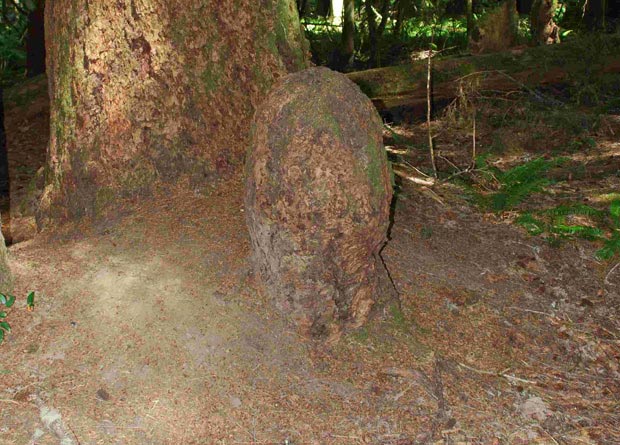Helping one another
When the roots of two trees of the same species graft their conducting tissues together, they can share nutrients. This can be problematic, though, because it allows certain pathogens to be transmitted – when they infect one tree, they can pass through the roots to another tree connected to it.
In northern California, you can sometimes see an albino redwood. Without chlorophyll (Green pigment of plants.), these trees would eventually die. But root grafts allow them to obtain from their neighbours what they are unable to produce themselves. These parasitic albino redwoods are the only known adult albino conifers.
Back
If you ever see the stump of a conifer, which instead of rotting has survived and healed over like the one in this photo, look around for a large tree of the same species. The tree and stump probably share grafted roots. The large conifer provided the resources needed for the stump to heal, and in return it gets to draw on the stump's root.





